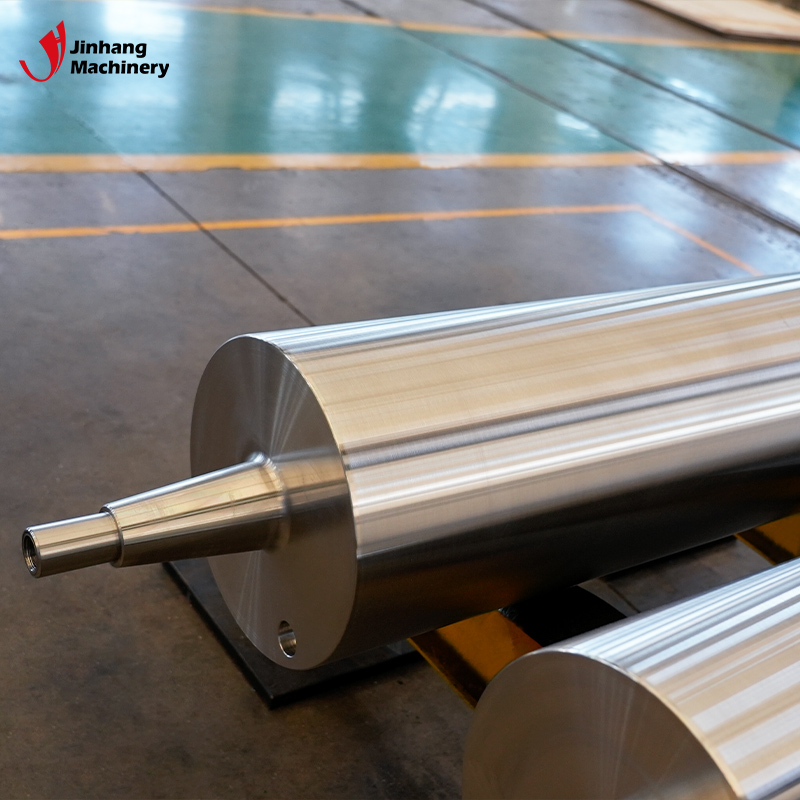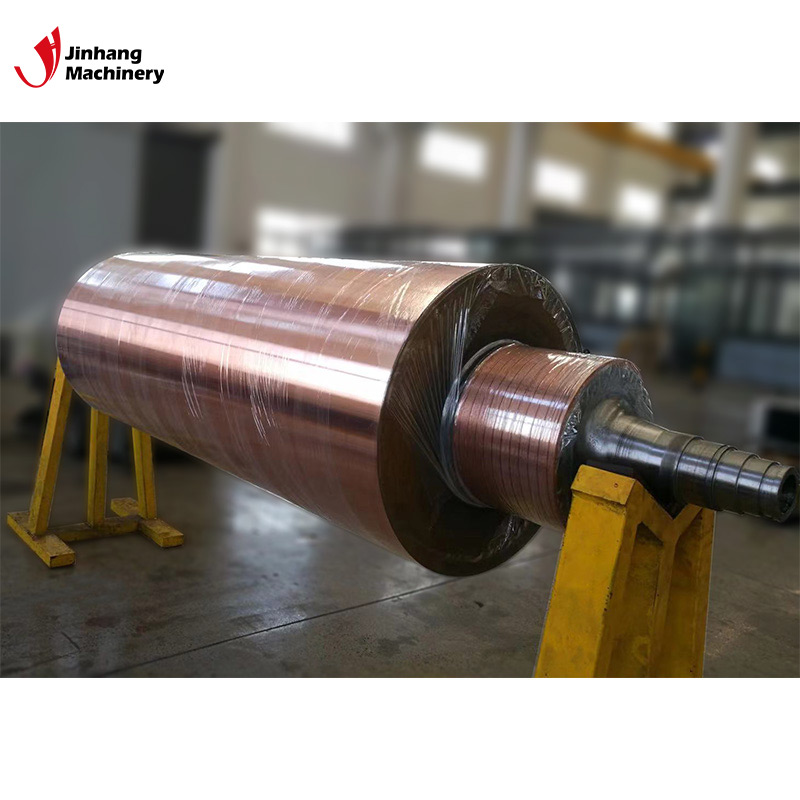How does the corona roller work?
Corona roller, as an important tool for electrostatic treatment in modern industry, is widely used in the surface treatment process of materials such as plastics, paper, and metal foil to improve the adhesion and subsequent processing performance of materials. However, the working principle of corona roller is still relatively unfamiliar to many people. In this article, we will deeply analyze the core technology and working principle of corona roller to reveal the scientific mystery behind this technology for readers.

What is corona roller?
Corona roller is a device that uses high voltage to generate corona discharge on the surface of materials, thereby changing the surface properties of materials to enhance their adhesion. It is one of the key components of the corona treatment system, and together with high-voltage power supply, treatment electrode and other components, it constitutes a complete working system. Corona roller is mainly used on production lines to ensure the smooth progress of subsequent processes (such as printing, coating, bonding, etc.) by performing non-contact surface treatment on fast-moving materials.
Corona discharge: core technology mechanism
To understand the working principle of corona roller, you first need to understand the physical mechanism of corona discharge. Corona discharge is a gas discharge phenomenon in a non-uniform electric field, which usually occurs near the tip or electrode with large curvature. When a high voltage electric field is applied, molecules in the air are ionized, generating free electrons, ions and other charged particles. This discharge process forms a high-energy plasma zone, called the corona region.
In the corona roller, this process is achieved by the electric field between the specially designed electrode and the roller. The surface of the roller is usually coated with a layer of insulating material to prevent direct short circuits while maintaining a uniform electric field distribution. The high voltage power supply applies AC or DC high voltage (usually between 10-30 kV) to the electrode, causing a corona discharge in the air gap between the roller and the electrode. At this time, the charged particles bombard the surface of the material, changing its molecular structure and energy distribution, thereby achieving the purpose of treatment.

The scientific principle of corona rolle surface treatment
The changes in the surface properties of the material by the corona roller are mainly reflected in the following aspects:
1. Improve the surface energy
The adhesion of the material surface is mainly related to its surface energy. Most plastics and other polymer materials have low surface energy, which makes it difficult for them to form a strong adhesion with materials such as inks, coatings or glues. Corona discharge acts on the surface of materials through charged particles and ultraviolet radiation, destroying the original molecular structure and introducing polar functional groups (such as hydroxyl, carboxyl, etc.), significantly increasing the surface energy.
2. Increase micro-roughness
The high-energy particles generated by the corona roller will change the morphology of the material surface at a microscopic scale, forming more micropores or rough structures. This structure helps to increase the mechanical interlocking effect between the material and other substances, thereby improving adhesion.
3. Remove surface contaminants
Trace contaminants (such as grease, dust, etc.) on the surface of the material will significantly reduce the adhesion performance. The high-energy particles of corona discharge can decompose these contaminants or volatilize them to achieve a cleaning effect.

Structural design and key components of corona roller
In order to achieve stable and efficient corona discharge, the design of corona roller usually includes the following key parts:
1. Roller
The roller is a component that is in direct contact with the material, and its surface is usually covered with a layer of high-temperature resistant insulating material, such as ceramic, silicone or Teflon. This design not only prevents damage to the roller body by corona discharge, but also ensures that the material remains in a stable operating state during processing.
2. High-voltage electrode
The high-voltage electrode is used to generate a strong electric field and is the core component of the corona roller system. The electrode is usually made of special conductive materials, and its geometry is carefully designed to achieve uniform corona discharge.
3. High-voltage power supply
The high-voltage power supply provides the necessary energy for the corona roller, and its output voltage can usually be adjusted according to the material type and processing requirements. The corona discharge generated by the AC power supply has a higher stability, while the DC power supply is suitable for some special application scenarios.
4. Cooling system
Corona discharge generates heat, and long-term operation may cause the system to overheat. Therefore, many corona roller equipment are equipped with a cooling system (such as air cooling or water cooling) to ensure the continuous and stable operation of the equipment.
What is the role of the corona roller?
The application range of the corona roller is extremely wide, especially in modern industrial production lines, it plays an irreplaceable role:
1. Surface treatment of plastic film
In the packaging industry, the printing and coating of plastic films require good adhesion, while the surface energy of untreated plastic films is low. The corona roller increases the surface energy so that materials such as ink and adhesive can be evenly distributed and firmly attached.
2. Paper and paperboard enhancement
For some high-end packaging papers or waterproof papers, the corona roller treatment can improve their coating properties, enhance surface strength and water resistance.
3. Metal foil treatment
Metal foils (such as aluminum foil) need to be firmly bonded to other materials in composite processing. The corona roller treatment can effectively clean the surface of the metal foil and improve the overall performance of the composite material.
4. Electronic component manufacturing
In the electronics industry, the insulation layer of many components needs to be corona treated to enhance its bonding performance and ensure the reliability of subsequent processes (such as coating, lamination, etc.).

What are the precautions for using the corona roller?
Although the corona roller technology is widely used, the following matters need to be paid special attention to during its use:
1. Voltage control
Excessive voltage may cause damage to the surface of the material, while too low voltage cannot achieve the desired treatment effect. Therefore, it is crucial to adjust the voltage according to the specific material characteristics and processing requirements.
2. Air Gap Adjustment
The size of the air gap between the electrode and the roller directly affects the uniformity of corona discharge and the treatment effect. Too large an air gap will lead to unstable discharge, while too small an air gap may cause equipment damage.
3. Regular Cleaning
After long-term use, impurities may accumulate on the roller surface and the electrode, affecting the discharge efficiency. Regular cleaning of the equipment can extend the service life and ensure the treatment effect.
4. Safety Protection
High-voltage discharge may pose certain safety risks to operators. Therefore, adequate electrical insulation and protective measures must be ensured in equipment design and operation.
Trusted Manufacturer for Customized Rolls & Cylinders – Competitive Prices
JH Machinery offers tailored industrial rolls designed for enhanced performance and longevity. Our products include tungsten carbide-coated rollers, corona rollers, and ceramic-patterned rollers suitable for heavy-duty industrial uses. Purchase from our factory in China to enjoy competitive pricing, volume discounts, and timely delivery. Our commitment to quality and after-sales service makes us your ideal supplier for all industrial roll requirements.
